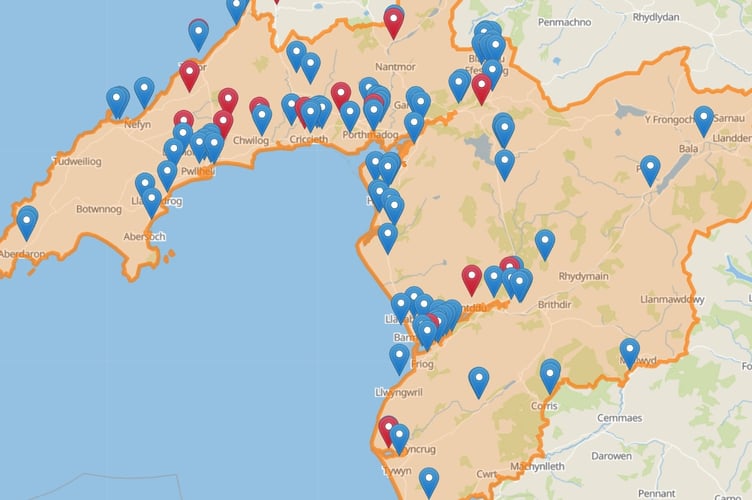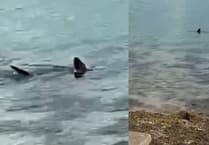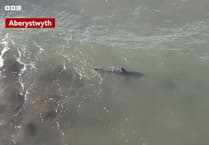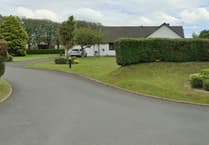Pollution alerts have been issued at beaches in Gwynedd and Ceredigion – and interactive maps have revealed where sewage spills are most common ahead of the summer holidays.
Data released from Wales’s primary water supplier Dŵr Cymru and environmental regulator Natural Resources Wales revealed a concerning record of discharges across seas, rivers and waterways last year.
But with the school holidays approaching, visitors will be concerned to know which areas of the two counties – heavily reliant on tourism – will have clean bathing spots.
On Monday, 10 July, NRW issued a pollution risk alert at Aberdyfi and has logged two reports of sickness after swimming at the beach, according to environmental charity Surfers Against Sewage (SAS) - which also tracks spills on an interactive map.
The alert reads: “Please be aware there is currently a situation as this location.”
An NRW spokesperson said: “Our bathing water monitoring has noted an elevated level of bacteria in the area.
“Sheep faeces was recorded on the beach during sampling on 6 July and we believe this is a natural occurrence associated with rain, tides and the grazing of nearby saltmarsh by livestock.”
But as yet there have been no suspected sewage discharges captured along the coastline – despite hysteria further up the coast in Tywyn about wastewater treatment works discharges contributing to an unusually thick and foul-smelling algal bloom this year.
But further down Cardigan Bay on Llanrhystud beach, a sewage pollution alert was issued by SAS. It said: "There has been a sewage discharge at Llanrhystud which started on 11 July at 12.55. Welsh Water is responsible for this discharge."
The private water sector refers to discharge drains as combined storm overflows (CSOs) and warns that sewage flooding and damage to homes would occur without them – especially during periods of extreme weather. But opponents say companies have neglected an antiquated network of pipes which increases the need for the divisive practice.
According to last year's data, in Gwynedd, Morfa Nefyn, a village on the northern coast of the Llŷn Peninsula, saw a total duration of 1,570 hours (down 2,700 on 2021) from 321 separate incidents during last year - the third highest level in Wales and sixteenth highest in the UK.

Tywyn saw nearly 1,150 hours of overflow from 116 spills (down 38 on last year). Tourism hotpots Barmouth and Criccieth also saw 404 hours from 200 discharges and 604 hours from 79 spills respectively.
The statistics have been analysed by website Top of the Poops which has produced a series of interactive maps tracking the sewage outlets with the highest rate of discharge.
The highest rate of spills came from the Abererch wastewater treatment works storm overflow, which empties into the River Erch near Pwllheli. It saw nearly 4,300 hours of discharge from 224 separate dumps.
This was followed by the Llangybi works at the centre of the Llyn Peninsula which saw 153 spills for a total of 2,868 hours (equivalent to 119 days).

The Llanuwchllyn works near Bala and Wales’ largest lake, Llyn Tegid, saw 208 spills for 2,819 hours.
Wastewater treatment sites in Llithfaen and Dolgellau followed closely behind both recording about 2,600 spills. Works in Beddgelert, Y Ffôr, Blaneu Ffestiniog, Cricceith and Fairbourne also saw a high number of spills.
When it comes to Ceredigion beaches last year, New Quay in south Ceredigion saw a dramatic inflation in discharges reaching a duration of 1,800 hours (up nearly 400) from 138 separate incidents during last year, bucking a downward national trend. It saw the fifth most sewage overflow of any beach in Wales.
Aberystwyth South saw 1,500 hours of discharges, down a quarter on the year before, and nearly 200 individual dumps. It saw the ninth longest duration of dumping of any Welsh beach.
When it comes to spills, the Cwrtnewydd sewage treatment works storm overflow, leading into the Nant Cledlyn, saw 366 dumps which equate to 4,280 hours.
It was followed by the Cardigan wastewater treatment works CSO drain which leads into the highly polluted River Teifi where there were 298 spills which combined amounted to 2,801 hours of overflow. Drains in Lampeter, Llanfarian, Tregaron and Llanybydder also saw 1,500 or more hours of discharge.
The website producers confirmed to the Cambrian News following questioning that no correction had ever been requested from Dŵr Cymru.
A Dŵr Cymru spokesperson said: "With monitors now on over 99.5 per cent of our overflows, we are able to provide one of the most comprehensive reports on how our storm overflows perform.
"We report this information to our environmental regulators and also provide real time spill information for key bathing waters to interested bodies, including Surfers Against Sewage and Rivers Trust.
"While we are pleased to see the reduction, which in part is due to the investment work we are undertaking to reduce spills, the reduction has also been influenced by the weather we saw last year.
"The annual rainfall for the year was 10 per cent below the long term average, we saw the driest January-August period since 1976 and drought conditions were declared across parts of Wales and England.
"The total removal of combined storm overflows from our system is unaffordable and would take decades and therefore is not an option but what is in our control is the ability to target investment to CSOs which have the biggest environmental impact.
"That is why we are investing significantly to improve CSOs with £140m being invested between 2020-2025 and a further £420m planned from 2025 to 2030.
"Our investment to date in our wastewater system has delivered real improvements and helped ensure Wales has over a third of the UKs Blue Flag beaches while only having 15 per cent of the coastline and that 40 per cent of our rivers and waterbodies meet good ecological status compared to 16 per cent in England.
"However, we recognise that with environmental legislation tightening and customer expectations changing, more needs to be done to protect bathing and river water quality.
"Equally as important as tackling CSO’s is tackling phosphorous pollution and we are delivering a comprehensive programme of upgrades to our wastewater treatment works that will remove 90 per cent of our phosphorous discharges by 2030."





Comments
This article has no comments yet. Be the first to leave a comment.